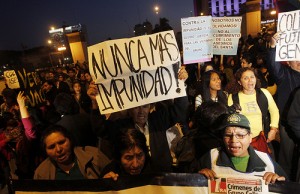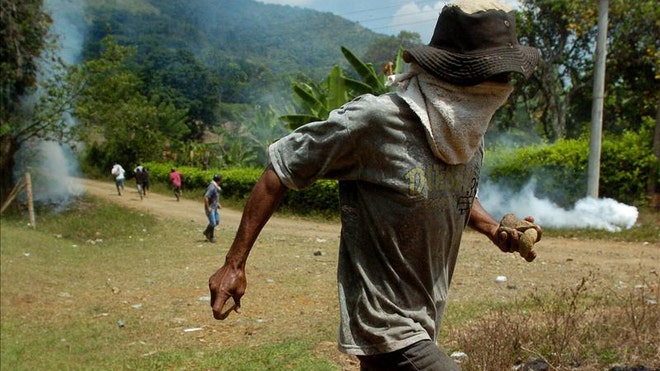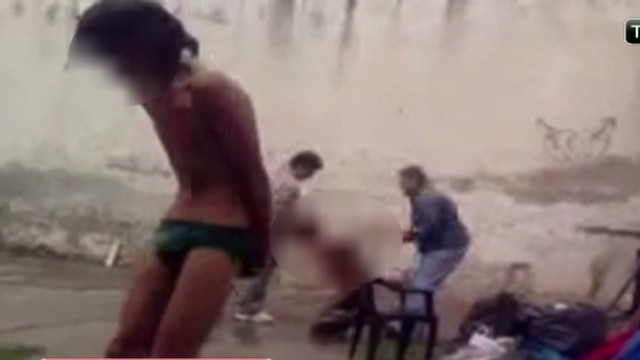By Margaret Janelle Hutchinson
Impunity Watch Reporter, South America
BOGOTA, Colombia – Colombia’s second largest insurgent group, the National Liberation Army or ELN released a video today of two women taken hostage last week. The video depicts Elida Parra Alfonso, a journalist from Radio Sarare, who was kidnapped on 24 July from her home in Saravena Municipality, Arauca Department in northern Colombia and Gina Paola Uribe Villamizar, an environmental engineer, who was kidnapped in the same borough on the same day.

The ELN initially took credit for the kidnappings on Monday in the form of a message sent to the families of the kidnapped women.
Parra and Uribe do community outreach work for contractors on the Bicentennial Pipeline, or OBC, which – once completed – will transport crude from oil fields in Arauca 600 miles to the Caribbean port of Coveñas, making it the longest pipeline in the country. Once in operation, the pipeline will transport 125,000 barrels per day.
A consortium made up of Colombia’s state-owned Ecopetrol and seven multinationals is building the OBC, including Canadian firms Pacific Rubiales Energy and Petrominerales.
The building of the OBC has been plagued by protests and acts of violence. In the middle of last month Colombia’s government planned to deploy 5,000 soldiers to protect the Bicentennial Pipeline.
“We’re not going to be intimidated by terrorists who are trying to sabotage (the pipeline) and who are enemies of these projects,” Mines and Energy Minister Mauricio Cardenas said, when he announced the plans for enhanced protection last month. Cardenas was undoubtedly referring to leftist guerrillas who have fought a decades-old armed struggle against a succession of Colombian governments.
In the statement sent to the captives’ families, the ELN also took responsibility for the recent killing of Ricardo Mora, a manager of OBC contractor Sicim, and for a bombing at an oil pumping station.
The ELN vowed to continue its “political-military” action against the oil sector.
“Every megaproject of imperialism, multinationals and the oligarchy are and will be a military objective of the ELN, because they only benefit the capitalist system,” the rebel group said.
The ELN statement did not set forth any demands for the release of Uribe and Parra.
The ELN kidnapped 11 employees of Consorcio Casanare Avanzada, one of the contracting firms on the OBC, for a week earlier this year.
The rebels said in March that they are willing to end their offensive against the oil industry if the government agrees to make some areas off-limits and to levy a $10 per barrel “social tax” on crude production.
Amnesty International is calling for the immediate release of the two women.
For more information, please see:
Amnesty International – DOCUMENT – COLOMBIA: TWO WOMEN MUST BE RELEASED IMMEDIATELY – 2 August 2012
The Guardian – Colombia’s ELN guerillas release video of kidnapped women – video – 2 August 2012
Latin American Herald – Colombia Insurgents Admit Kidnapping Pipeline Employees – 2 August 2012
Colombia Reports – Female oil pipeline workers kidnapped in northeastern Colombia – 25 July 2012
Fox News Latino – Colombia to deploy 5,000 soldiers to protect new pipeline – 11 July 2012



